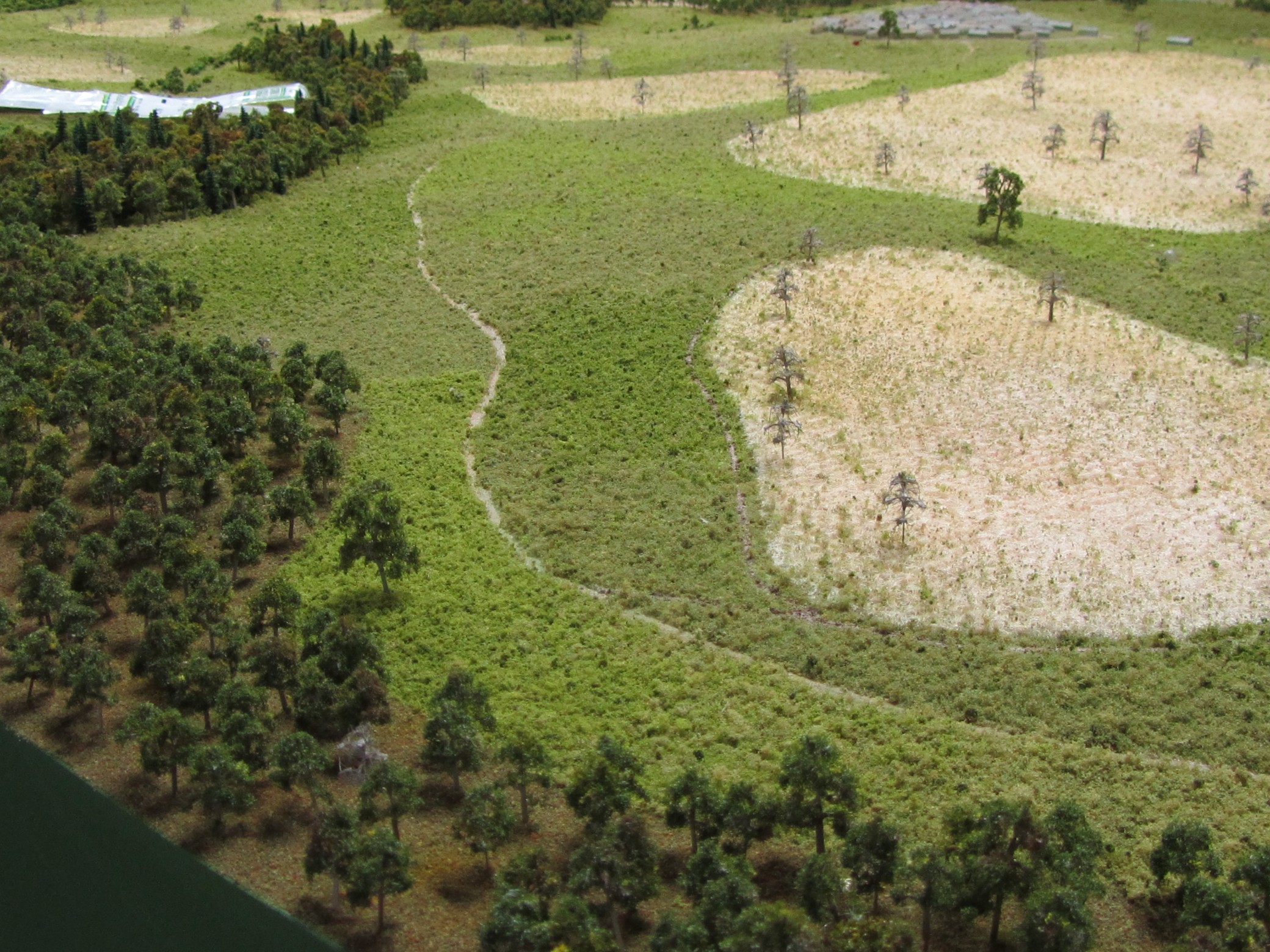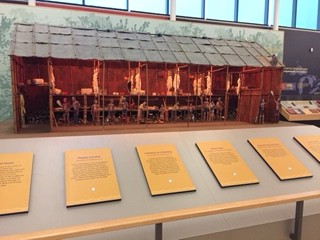Site Model of Ganondagan
This historical site model was created for a museum in Western NY. The interactive display depicted Ganondagan, a community of Seneca people living in the early 1600’s. A large swath of land needed to be included on the site model, therefore the scale was quite small: 1 inch = 100 feet. With such a tiny scale to work with, the landscaping was particularly important, otherwise the model risked looking boring and monotonous. There were no buildings to focus attention on other than a cluster of tiny longhouses, and no major geological features to provide excitement.
The time of year the client wanted depicted in the model was early fall. Research needed to be done to find the exact textures, shapes and colors which would realistically represent this time period. The team at KiwiMill experimented with various materials to accurately represent grasses, trees, corn fields, and water at such a tiny scale.
The site model was designed to light up various areas of the landscape as well. The corn fields, wooded areas, water sources, walking paths and gathering of longhouses all needed to light up at the push of a button. LED strips were imbedded into the surface of the model and electronically connected to a control panel. The electronic knowledge required to get each area to light up correctly was complex.
The topography base was made out of a block of foam, and programmed and cut with a CNC router in house. The slots for the LED lights were cut at the same time using the router. Once the foam base was cut and sanded, the LED lights were inserted, the wiring underneath was completed and the extensive landscaping added.
When the model was completed, it was carefully wrapped and transported to the museum’s gallery for installation.
The resulting historical site model provides an educational tool for museum patrons to interact with. Check out these videos:












































